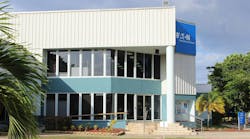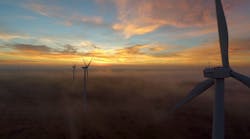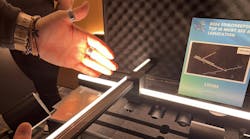Sure, electrical distributors and lighting professionals are well-versed in analyzing the financial impact and cost benefits of the lighting upgrades they conduct for customers. Citing payback periods and returns on investment and even some of the more sophisticated measures such as internal rates of return and net present value, the industry routinely designs entire lighting upgrade proposals around highlighting the attractive financial opportunities that upgrades can deliver and the significant boost they can add to a company's bottom line. But what about the all-important environmental benefits of a lighting upgrade? Imagine how compelling it would be for proposals to also demonstrate, in very quantifiable terms, the green contribution that an end user's lighting upgrade is making to the environment.
The adverse effects of our nation's current levels of electricity use on the environment are staggering. Recent statistics from the DOE's Energy Information Administration reveal that some 2.5 billion tons of pollutants including sulfur dioxide (SO2), nitrogen oxides (NOx), and carbon dioxide (CO2) are emitted into the atmosphere every year as a by-product of electricity generation by utility companies. Over time, emission of these pollutants has had profound negative effects on the environment, contributing to the depletion of the ozone layer, increased levels of acid rain, and the heightened prevalence of cardiac and respiratory ailments among the American population.
However, lighting upgrades make great strides toward offsetting these adverse effects on the environment and reducing our ecological footprint. By using the formulas on page 27, derived from a 2009 energy savings calculator developed by the Environmental Protection Agency (EPA) and Department of Energy (DOE), distributors can build this critical element into the lighting upgrade proposals they develop for their customers — identifying the green aspect of the project, or the CO2 reduction and air pollution reduction equivalence (in terms of acres of trees planted and cars removed from U.S. roads) that an end user's lighting upgrade is driving. Providing this environmental data will help distributors deliver greater informational value to their customers and raise awareness of this important but often overlooked lighting upgrade benefit.
The calculation tool
The formulas in Figure 1, Example 1 and Example 2, originally calculated based on the environmental benefits associated with conversion of one conventional, less-efficient bulb to an Energy Star-rated compact fluorescent lamp (CFL), have been broadened so they can now apply to any size lighting upgrade project involving any lighting technology. The examples illustrate the savings in a retail store and a commercial building.
As the examples show, a lighting upgrade of any size can have a beneficial effect on the environment, and lighting proposals can now be enhanced to demonstrate the green contribution associated with an end user's lighting upgrade.
Conclusion
On top of their attractive financial benefits, energy-efficient lighting upgrades within the country's 5 million commercial, industrial and institutional buildings do a great deal more than reduce energy costs, improve productivity and enhance system quality. They also significantly benefit the environment and help conserve precious natural resources. So don't hesitate to include an assessment of the green element in your analysis of a lighting upgrade project using the simple guidelines in the examples shown in this article. It will not only enhance the quality of your proposals but will help your customers understand how their actions are helping to drive a more energy-efficient future for generations to come.
Susan Bloom, a freelancer and consultant, is an 18-year veteran of the lighting and electrical products industry. You can reach her at [email protected]
**Based on estimated 8,000-10,000 hour lamp life
- Benefit in terms of pounds of CO2 emissions avoided over the life of the new lamps*:
15.4 pounds × 29 Watts saved/fixture × 50 fixtures = 22,330 pounds of CO2 - Benefit in terms of equivalent number of cars removed from U.S. roads annually:
.0013/Watt saved × 29 Watts saved/fixture × 50 fixtures = 1.9 cars removed annually - Benefit in terms of equivalent number of acres of trees planted:
.0015/Watt saved × 29 Watts saved/fixture × 50 fixtures = 2.2 acres of trees planted
- Benefit in terms of pounds of CO2 emissions avoided over the life of the new lamps*:
15.4 pounds × 15 Watts saved/fixture × 10,000 fixtures = 2.31 million pounds of CO2 - Benefit in terms of equivalent number of cars removed from U.S. roads annually:
.0013/Watt saved × 15 Watts saved/fixture × 10,000 fixtures = 195 cars removed annually - Benefit in terms of equivalent number of acres of trees planted:
.0015/Watt saved × 15 Watts saved/fixture × 10,000 fixtures = 225 acres of trees planted








